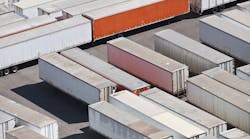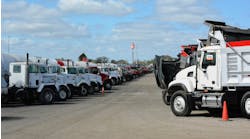Trailer orders surge in March, further increasing pent-up demand
Preliminary reports within the commercial vehicle space show that trailer orders have reached their highest level since December 2020. The question remains: Can trailer OEMs sustain these orders?
FTR Transportation Intelligence data reveals that preliminary trailer orders surged in March to 36,200 units, an increase of 41% month-over-month and 29% year-over-year. According to FTR, trailer orders for the past 12 months have totaled 252,000 units. Preliminary reports from ACT Research show that trailer bookings of 37,900 units were up 40% month-over-month and 28% better year-over-year.
Most of the major OEMs registered sturdy numbers showing significant increases versus the past six months. March’s strong order total is expected to raise backlogs over the 200,000-unit mark for the first time since May 2021, FTR noted.
See also: Class 8 orders remain level as OEMs continue to fight supply chain constraints
“It is uncertain if this level of orders can be sustained,” Ake added. “However, it does signal an expectation that build rates could increase later this year. Because OEMs had their output limited by the supply chain, we estimate that pent-up demand for trailers could be as high as 100,000 units. It will take an extended time for OEMs to catch up with fleet requirements once the supply chain opens up.”
ACT Research’s State of the Industry: U.S. Trailers report provides a monthly review of the current U.S. trailer market statistics as well as trailer OEM build plans and market indicators divided by all major trailer types, including backlogs, build, inventory, new orders, cancellations, net orders, and factory shipments.
See also: Growing trailer backlog challenges manufacturers
“Our discussions this month revealed a variation in order acceptance strategies across the industry,” noted Frank Maly, director of CV transportation analysis and research at ACT Research. “Some OEMs noted that their extremely low order volume was the result of a ‘sell-out’ of their projected available production slots for the remainder of the year. Others, accepting higher order volumes, were in the process of filling their remaining production capacity for 2022.”
Maly also mentioned some unwillingness for OEMs to officially open 2023 order boards, expressing concerns about setting pricing as a major challenge.
“A positive development was indication that some supply-chain relief was beginning to be felt,” Maly said. “Final figures for the month will likely reveal total industry backlog now stretching into December at current production rates, heavily influenced by dry van and reefer commitments that basically fill their year.”




